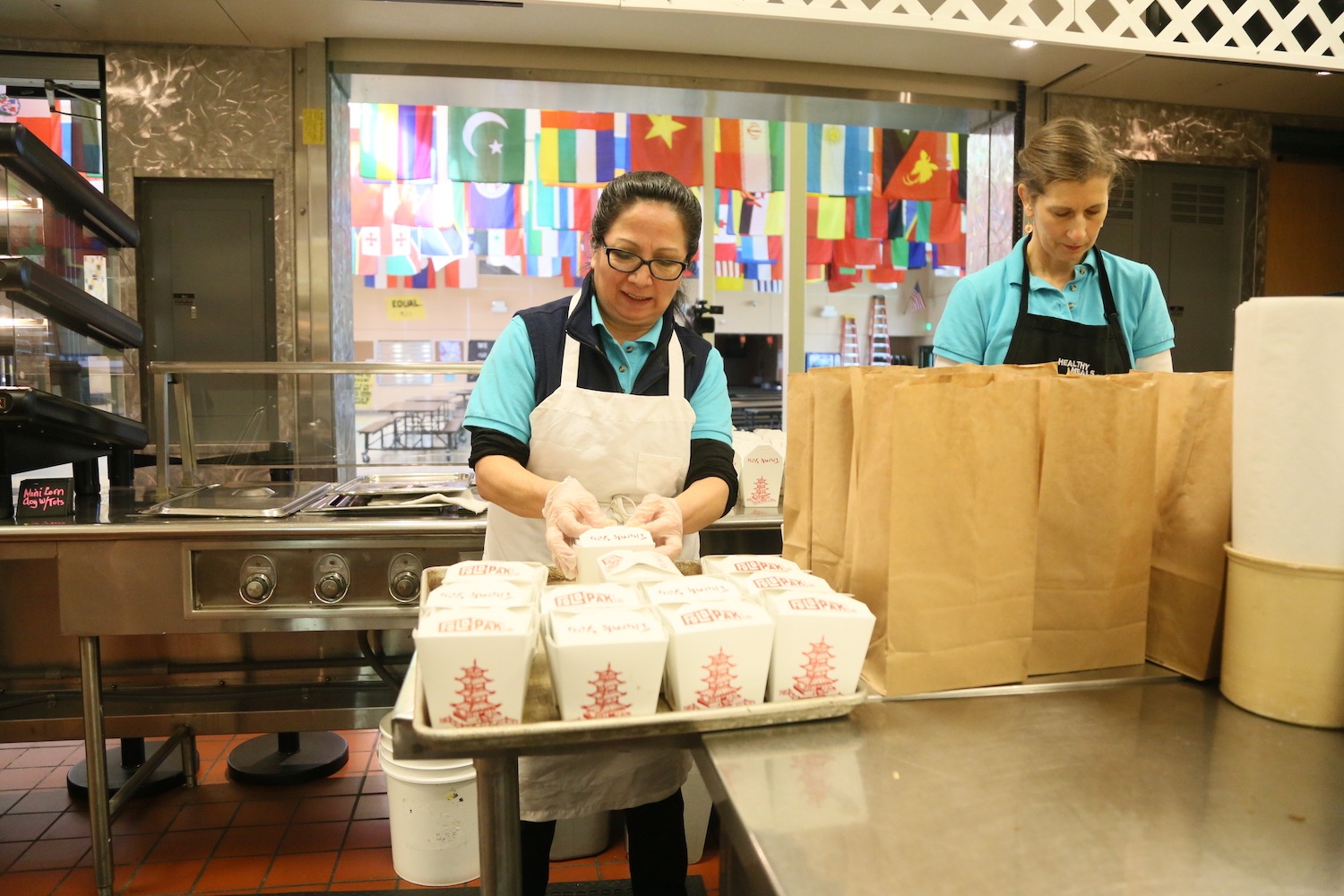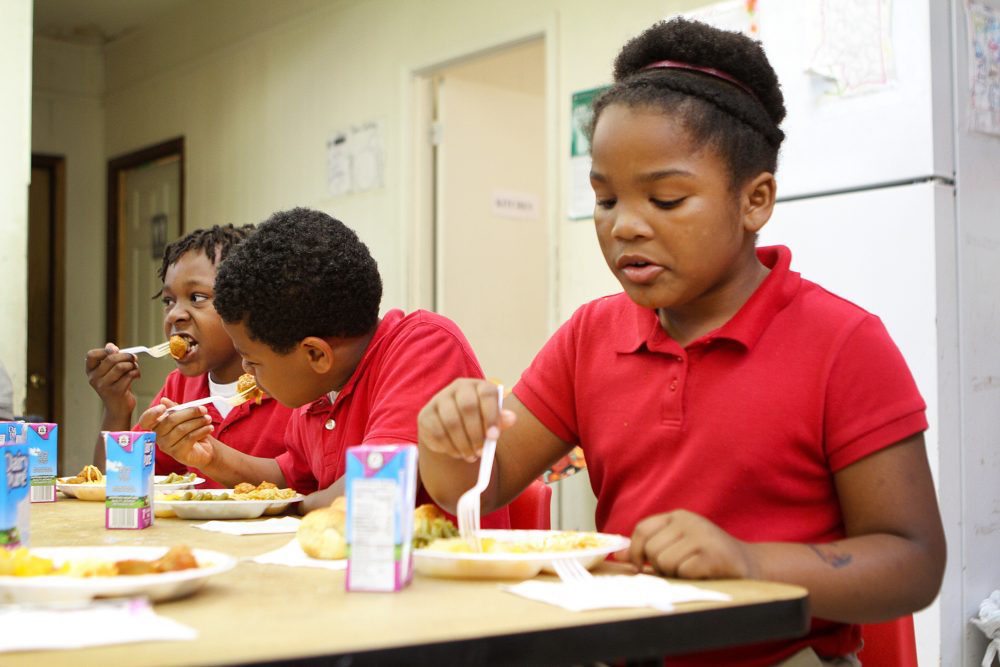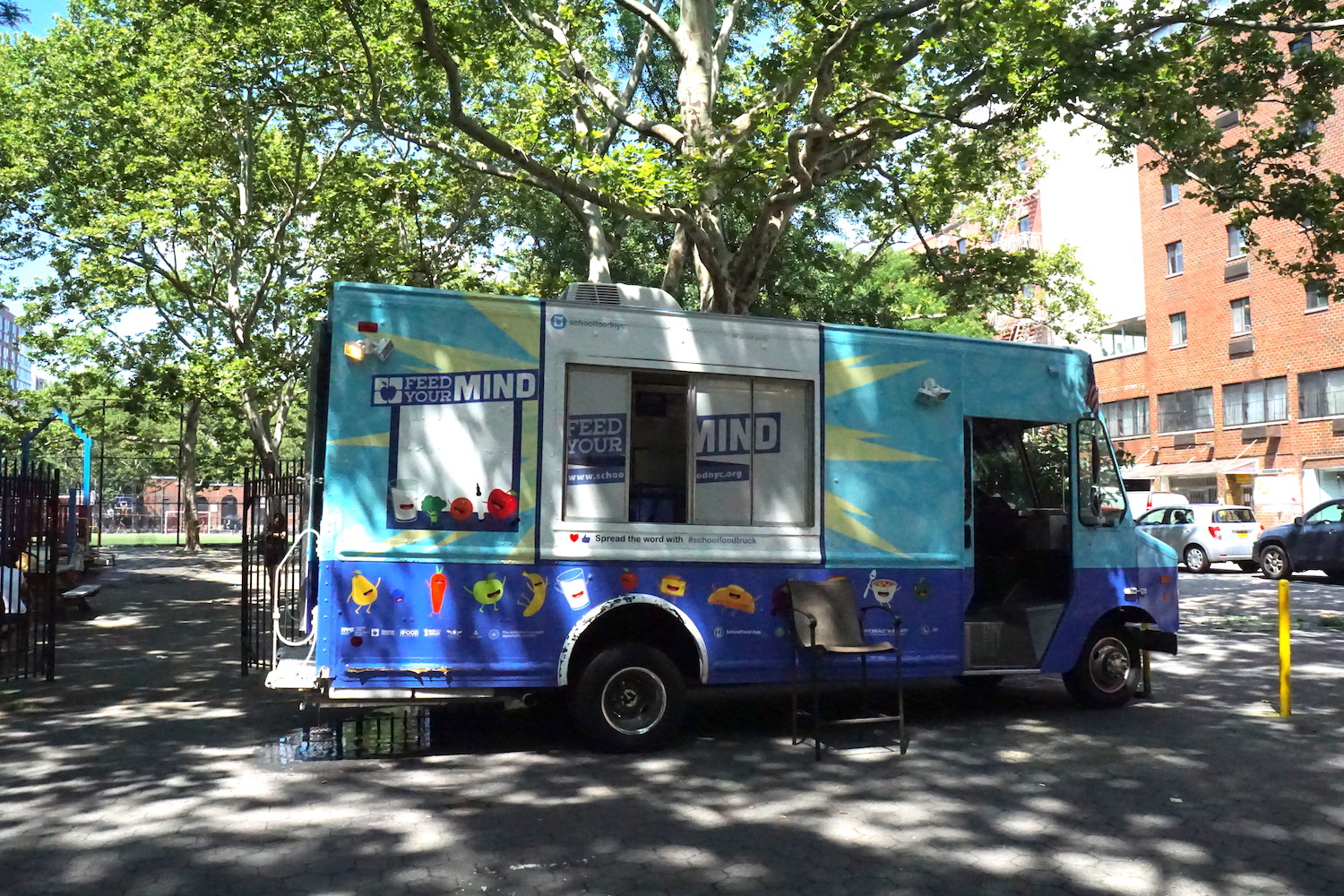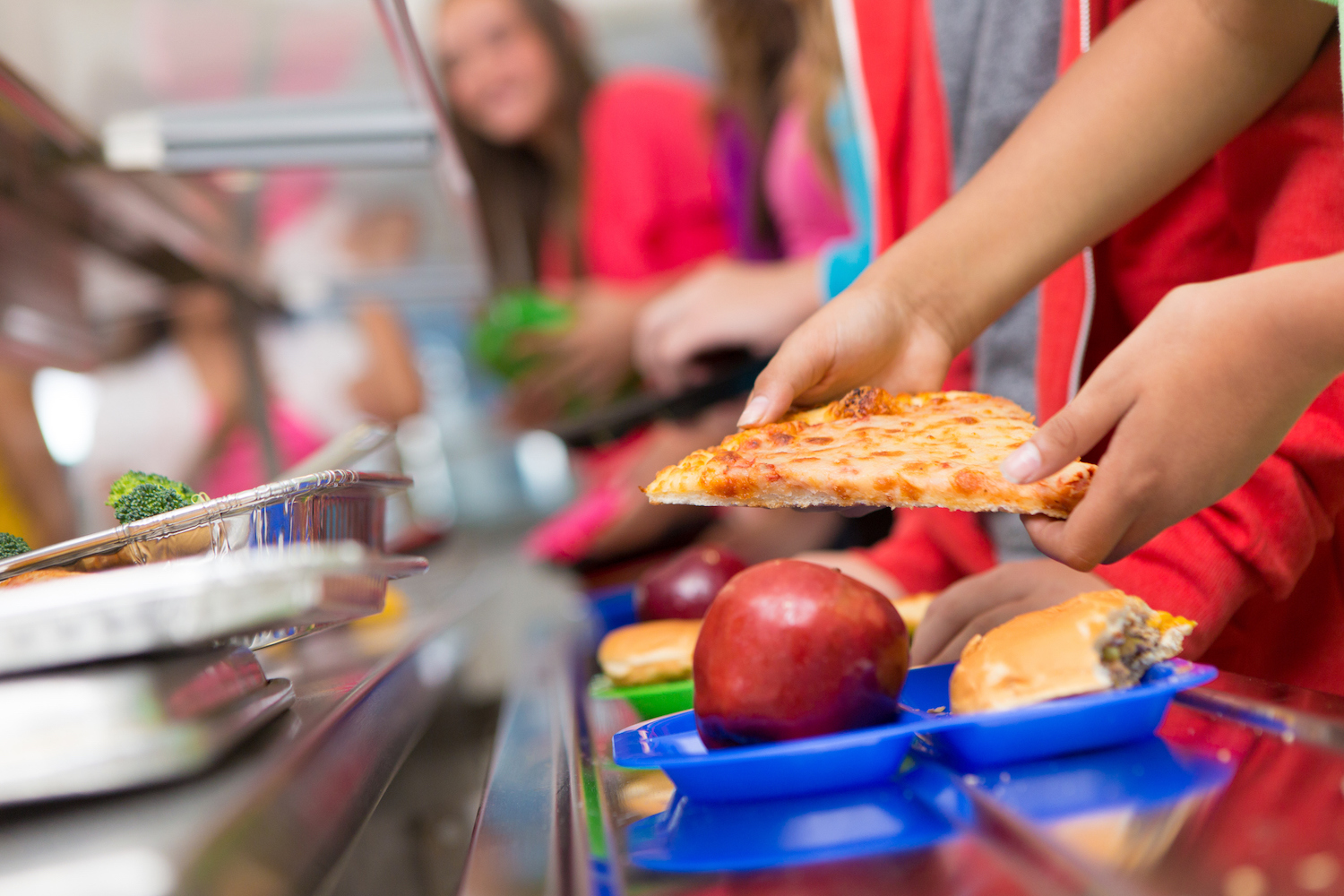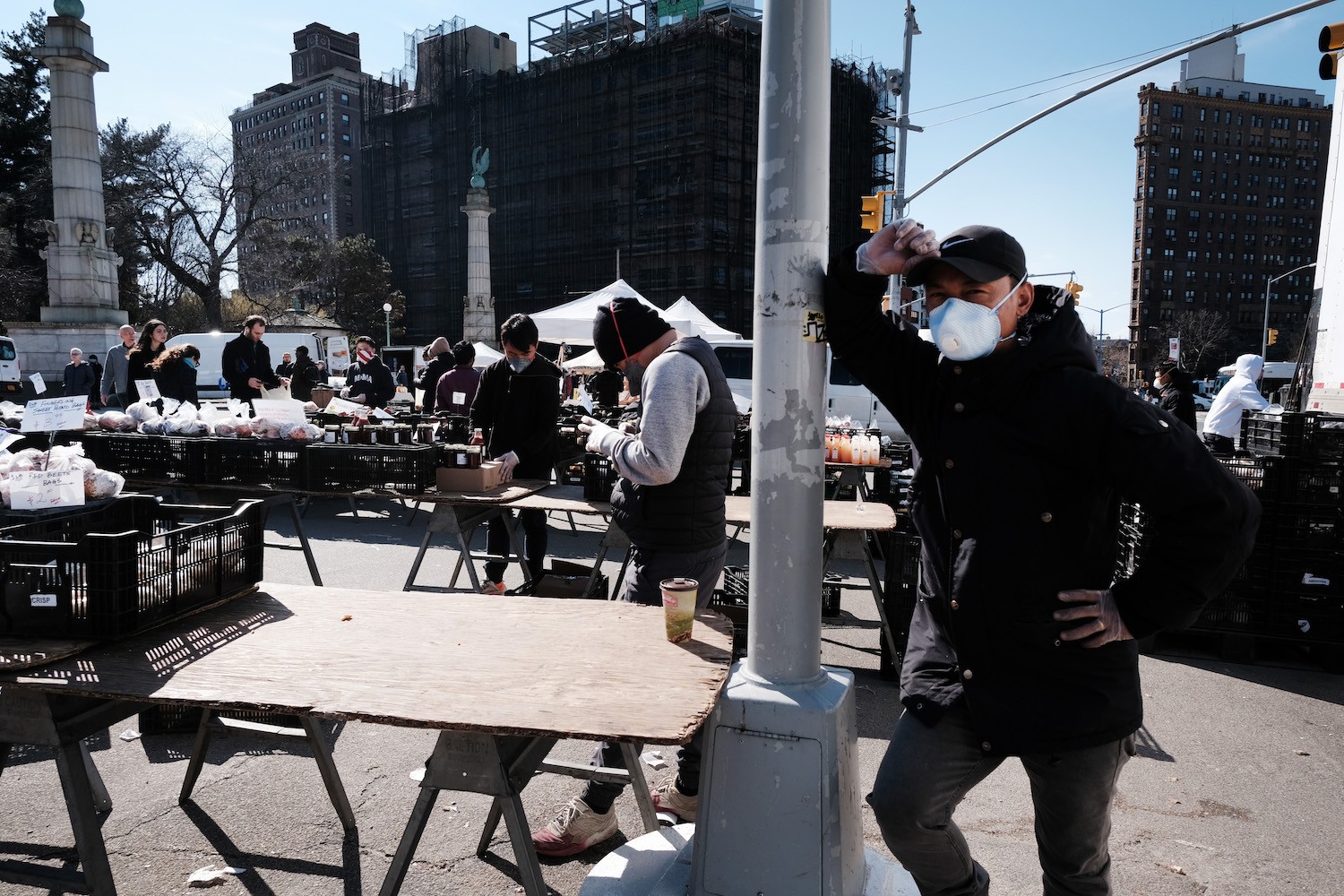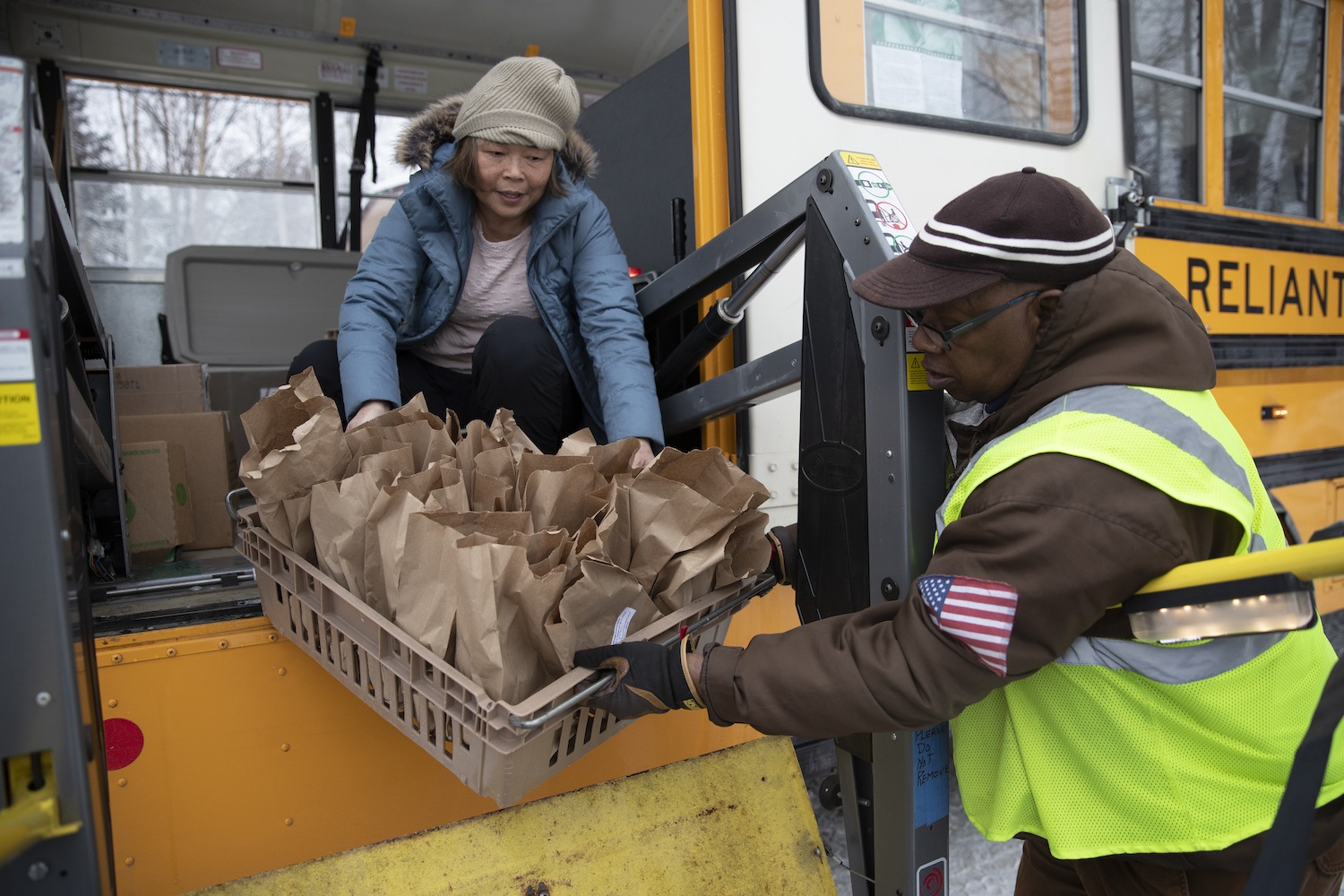
Robert Deberry
School districts across the country are providing free meals to students throughout the coronavirus pandemic. The Anchorage school district is going a step further, using school buses to directly reach kids in need.
On a brisk late winter morning in Anchorage, Alaska, a yellow school bus slows to a stop in the middle of one of the biggest apartment communities in town. It’s just above freezing, but as soon as it’s parked, families come streaming out of their homes, many still in their pajamas. They don’t want to miss it.
They’re not coming out to board the idling bus, as COVID-19 has shut down most schools in the country. But many waiting in line are still carrying backpacks.
Bus driver Steve Ontiet greets each person as they approach and offers them a pump of Purell hand sanitizer.
“Three meals?” he asks a young mom as she unzips a dinosaur backpack.
“You got it,” she replies, beaming. “You’re really starting to get this down.”
Across the country, many school districts have been given the green light to continue federally funded meal programs even though their normal classrooms are shuttered. Nearly 30 million children qualified this year for free and reduced price lunches provided through the National School Lunch Program. It’s likely demand will grow even higher with unemployment expected to reach record highs in coming months after coronavirus forced the widespread closure of businesses across the country.
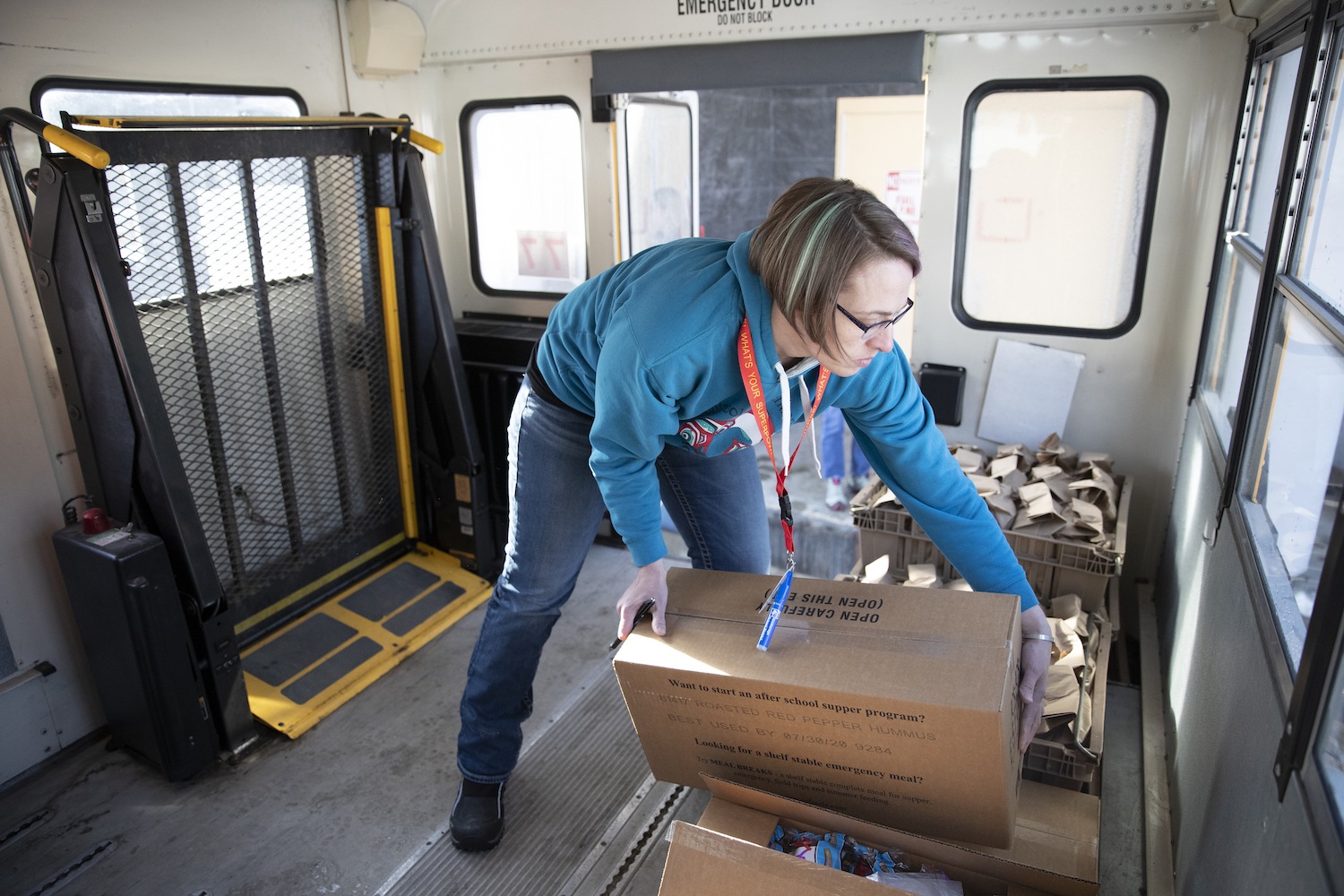
Chinook Elementary nurse Wendy Williams stacks food boxes for delivery on a school bus.
Robert Deberry
In schools still providing the meals, families can swoop in and grab them either in the school parking lot or other staging areas.
But for those who aren’t able to go to the sites, schools nationwide are mobilizing their school buses to bring meals to their food insecure students. Districts in New Jersey, Ohio, Minnesota, Michigan, Georgia, North Carolina, Alaska and more have found creative ways to use their normal bus routes to make sure lack of food isn’t another thing parents need to worry about during the pandemic.
“Many families that get free and reduced lunches were already having a difficult time putting food on the table,” Jeremy Everett, the executive director of the Baylor Collaborative on Hunger and Poverty, said. “Having programs like these is a big deal, especially now.”
At the apartment complex in Anchorage, two school cafeteria managers move six brown paper bags (three breakfasts and three lunches) from blue Coleman coolers into a milk crate. They slide the box from the back of the bus down the length of the outstretched wheel chair ramp. It’s a move that lets them remain six feet away from the families as they load their bags. Ontiet, the bus driver, sprays the box and ramp with a cleaner and the process repeats itself. Over the course of the next few hours, the bus will make eight more stops to dispense free meals to some of the city’s neediest kids.
“There are a significant number of kids within the district that rely on the provided breakfast and lunch and there’s no better way to get these to them.”
The Anchorage School District (ASD) established six delivery routes in the days following school closure on March 15, focusing on the neediest neighborhoods.
Andy Mergens, the Executive Director of Student Nutrition at ASD, said they use the buses for two reasons.
“First, the buses are recognizable,” Mergens said. “When you see a big yellow school bus driving through a neighborhood when school is out, it’s kind of a signal that something is going on. It helps spread the word. Second, there are a significant number of kids within the district that rely on the provided breakfast and lunch and there’s no better way to get these to them.”
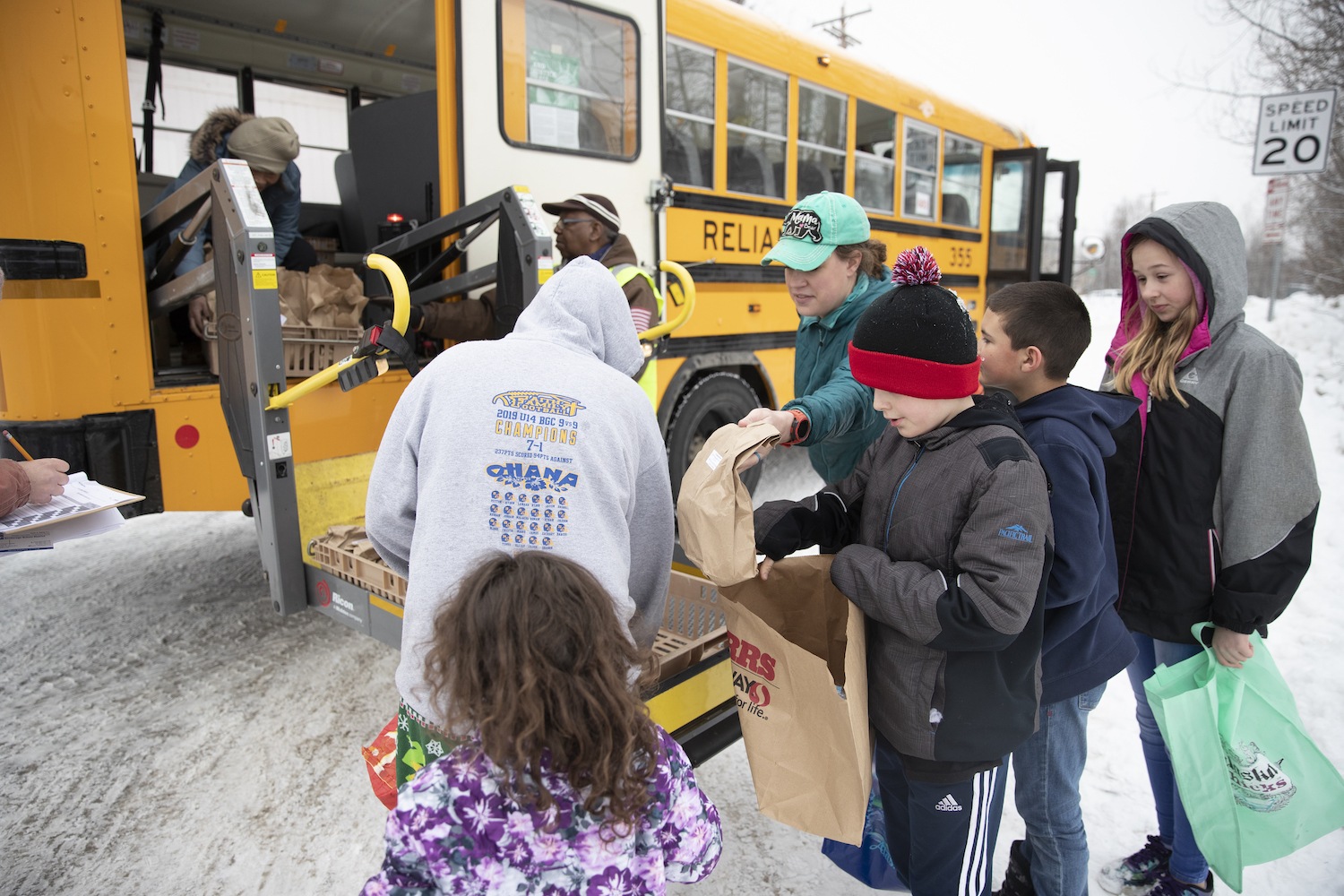
Anchorage School District students pick up food from the Distric’s mobile food delivery.
Robert Deberry
The bus routes were chosen because the families in those areas didn’t have good access to static food pick-up locations, either because their homes are too remote or they live on the side of a busy highway or high traffic road that would be too dangerous for kids to cross alone, Mergens said.
In the days since launching the bus program, ASD has seen an increase in students at the bus stops every day. All kids are given one breakfast (usually cereal and milk) and one lunch (designed to be take-and-bake) on Monday-Thursday, as well as three breakfasts and lunches on Friday, to get them through the weekend (something the district doesn’t do in the school year, but feels they need to do now). At the end of last week the district was providing nearly 10,500 meals a day. During a normal school year, the school district makes between 25,000-27,000 meals a day, but there are roughly 50,000 students in the district. About 1/5 of all the students in the district are currently getting free meals.
While running the food via school bus isn’t required, Mergens said he thinks many districts have adopted similar programs because they understand the need.
“My staff sees these same families day after day, they get to know them, they get to understand the need, and see that gratitude.”
“Nobody has balked at the prospect of doing this,” Mergens said. “They see the benefit of it and they get the feedback from the families that come up to them and say ‘thank you’ for doing this. My staff sees these same families day after day, they get to know them, they get to understand the need, and see that gratitude. I think that’s what motivates a lot of us, knowing we’re making a difference.”
David Gill, one of the cafeteria managers on Ontiet’s bus, said that though the students he’s serving now aren’t his usual (he works at a school on the other side of town), he understands the need of these particular kids. He used to live in the apartment community where they deliver the bulk of their meals. The 406 apartment homes are favored by low-income families, as the sprawling complex is one of the cheapest in town. He remembers myriad conversations with his old neighbors about their shared money struggles.
“When I got the phone call to do this it seemed like a no brainer,” Gill said. “My job is to feed kids and this allows me to continue doing that. And these kids really do need it.”
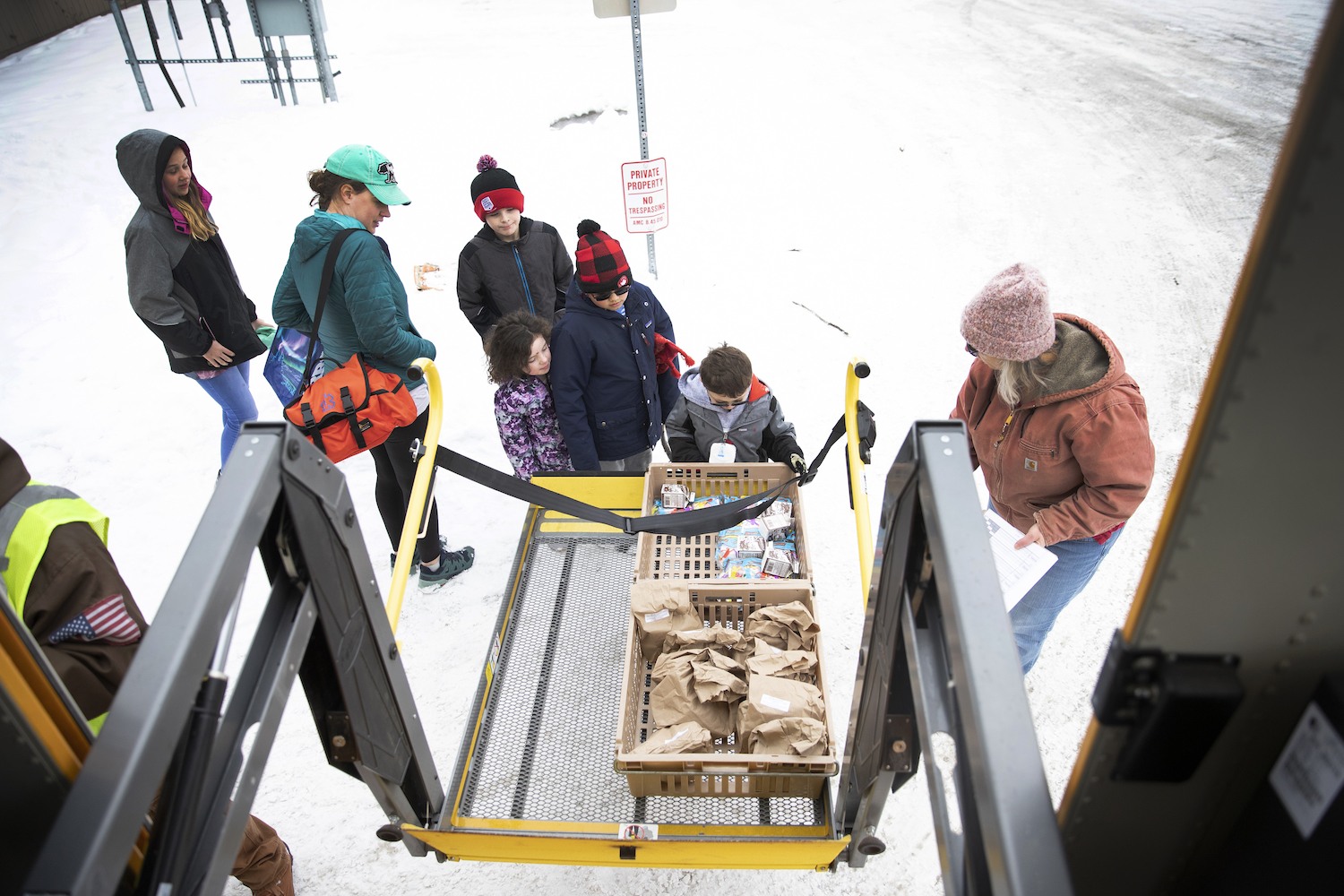
Anchorage School District students pick up food from the Distric’s mobile food delivery.
Robert Deberry
Gill said he feels fairly safe in his adapted role. The families are told to continue to maintain social distancing protocols and wear masks and they regularly sanitize their equipment between each group and stop.
“If I felt like I was in too much danger, I wouldn’t do this, but we’re really cautious,” Gill said. “I’m trying to balance understanding and respecting the world we’re living in now with being productive and helping where I can.”
No Kid Hungry, a nonprofit working to solve child hunger, estimates that 11 million children in the U.S. live in food insecure homes, meaning the household doesn’t have enough food for every family member to live a healthy life. This can be because the food is not nutritious or the portions aren’t big enough. One in seven children in the U.S. lives with hunger, the group estimates.
In Alaska, the number of children under 18 living in households with uncertain access to safe, nutritious food is 19.6%, according to Feeding America, a network of more than 200 food banks that feed more than 46 million people. The states with the most food security are North Dakota (9.4%), New Hampshire (12.9%) and Minnesota (13.5%), while New Mexico, Arkansas (both 25%), and Mississippi (26.3%) are the least secure.
“Traditionally, the congregate meal requirement requires students to eat at their school, but buses and cafeteria workers have gone hand in hand to troubleshoot this food security issue for a while now.”
The number of hungry kids jumps dramatically in the summer, when school isn’t in session. It’s estimated that six out of seven hungry children don’t get needed meals when school is out. Finding a program that gets food into the hands of those who desperately need it has been paramount for school districts and is even more so now.
While food is served in schools during the summer, this is the first time ASD has used buses. Everett, however, said there is precedent for using buses to get food out.
“There are school districts that in the summers convert buses into essentially little kitchens to drive to neighborhoods,” Everett said. “Traditionally, the congregate meal requirement requires students to eat at their school, but buses and cafeteria workers have gone hand in hand to troubleshoot this food security issue for a while now.”
ASD lets any parent or child come out for a free meal, figuring everybody is hurting and needs help in some way now, regardless of whether they qualified before.
Amber Abair homeschools her three daughters, but ASD said she’s more than welcome to come get meals. She’s on Ontiet and Gill’s route.
“My daughters love this,” Abair said. “And the people who do this are so kind.”
Not only do the meals help financially, but going to collect them and interacting with the staff has eased her daughter’s cabin fever and helps provide a brief distraction from the fact that her husband was recently deployed.
Last week, Abair’s youngest daughter wrote a card for their cafeteria staff.
“It was mostly scribbles, but she was so excited about them coming to see her every day, so she made them a little thank you card,” Abair said. “We’re all really, really appreciative of this, though. It means a lot.”

